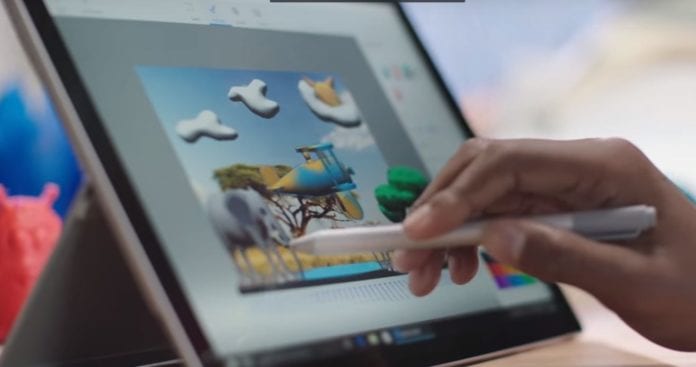Microsoft wants “3-D for everyone,” shows off HoloLens
Microsoft set the barre during its Windows 10 “Creators Update” keynote yesterday, just a day before Apple’s highly anticipated Mac event. The company known for its iconic Windows operating system defined its vision going forward, announcing products and services in a few specific areas: 3-D, virtual reality, gaming and computing for “creators.” A free update to Windows 10 will be coming in the first half of 2017, bringing 3-D augmented reality features to Microsoft’s operating system, along with a number of other features like its refreshed Paint with 3-D integration.

The first demonstration of the event showcased Microsoft’s dedication to moving mixed reality forward. This time, by making 3-D images and objects commonplace for mobile devices and upcoming augmented reality and VR platforms. The demo saw a user walk in a circle around a sandcastle, using her mobile camera to capture the real-life object on all sides. Microsoft’s software took the 360-degree photo, rendered it and turned it into a virtual object – making something temporary into something permanent.
There was no doubt what would be next on stage: HoloLens. Microsoft’s GM Megan Saunders showed off what the mixed reality of which HoloLens is capable of. The company displayed how its own AR headset and other third-party VR headsets interacted with the updated version of Windows 10.
Saunders explained how the HoloLens’ collaboration with the updated Microsoft Paint will allow for 3-D drawing. The demonstration saw the user take the virtual sand castle, throw it into paint, alter it and view it again in the real world in 3-D through HoloLens. An industrial “internet of things” use case shown during the event was online shopping with HoloLens. In the demo, a Microsoft employee was able to use the HoloLens to see how furniture would look in his house through a projected hologram before actually buying it.
Virtual reality and 3-D for all
Microsoft primarily focused its virtual conversation on mixed reality, only giving brief mention of virtual reality, a technology being pushed heavily by the companies making hardware for Microsoft’s Windows OS.

Microsoft said that companies including Lenovo and Dell will be making 3-D accessories, starting at $299 in the U.S., allowing users to experience and produce 3-D content.
Powerful and expensive computing for creators and gamers
Microsoft beat Apple to the punch, announcing new computing products before its rival hosts its own keynote on Thursday. The Seattle-based company surprised a lot of people by announcing a new product line, the Microsoft Surface Studio, an all-in-one and close competitor to the iMac.

The monster computer has a 28-inch LCD touchscreen monitor, the world’s thinnest at 12.5 millimeters, with 13.5 million pixels, or 63% more than a 4K TV. Of course, knowing Microsoft’s dedication to 2-in-1s, the display is always going to move in one way or another. While it doesn’t fold back entirely flat, the flexible hinges rest the computer down to a 20-degree angle, simulating an architect or drawer’s drafting table. Its base has numerous connectivity options: Aux, SD card, Mini DisplayPort, ethernet, and four USB 3.0 ports. There’s also a built-in microphone array, making it easy to activate Cortana, the built-in Windows 10 assistant, from across the room. It is compatible with 802.11ac Wi-Fi and Bluetooth 4.0.
https://www.youtube.com/watch?v=BzMLA8YIgG0
The workstation starts at $3,000 and goes up to $4,200. The highest-end model will afford you an Intel i7 processor, 32 gigabytes of RAM, 4 GB of Nvidia GeForce GTX 980M graphics processing unit and a 2 terrabyte hard drive.
https://www.youtube.com/watch?v=A1OsmndtIrY
Microsoft also refreshed the highest-end variant of its Surface Book, an ultrabook-tablet combo with 16 hours of battery life and an Nvidia GeForce GTX 965M GPU. The updated Surface Book will be available on Nov. 10, with 256GB, 512GB, and 1TB configurations for $2,399, $2,799, and $3,299, respectively.

